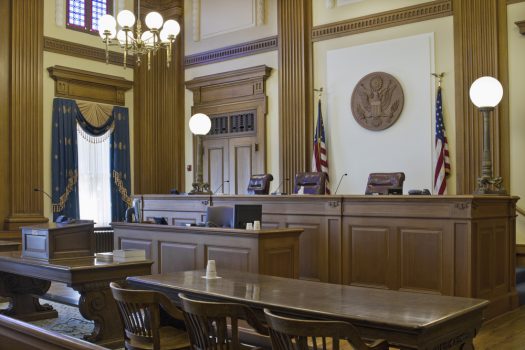In 62-64 Main Street, LLC, et al. v. The Mayor and Council of the City of Hackensack, the Supreme Court of New Jersey held that, in most instances, a municipality need not expressly find that deteriorated conditions on a property negatively affect surrounding properties, in order to declare the deteriorated property as in need of redevelopment under the New Jersey Constitution and the Local Redevelopment and Housing Law (LRHL). The decision should make it easier for New Jersey municipalities to declare properties in need of redevelopment and potentially to acquire them by eminent domain.
The Legal Background
The New Jersey Constitution provides that private property shall not be taken for public use without just compensation. One such public use is the redevelopment of blighted areas. To implement the Blighted Areas Clause of the Constitution, the New Jersey Legislature has adopted, over time, various laws governing the designation of property as blighted/in need of redevelopment. The most recent of those enactments is the LRHL, which identifies several criteria describing property conditions which could be used to qualify a property as in need of redevelopment.
In Gallenthin Realty Development, Inc. v. Borough of Paulsboro, 191 N.J. 344 (2007), the New Jersey Supreme Court held that a municipality could not designate property as in need of redevelopment under Section 5(e) of the LRHL, which is predominantly related to the non-productive use of property, unless the conditions on that property negatively affected surrounding areas.
The Facts of the Case
The 62-64 Main Street, LLC litigation involved designation by the City of Hackensack of five properties owned by the plaintiffs as in need of redevelopment. Some of the properties contained buildings found to be in substandard condition, while other properties included parking lots which the City also designated as satisfying the redevelopment criteria. However, these designations were made under different LRHL ‘blight’ criteria than the criterion examined in Gallenthin. In 62-64 Main Street, LLC, the parties disputed whether the obligation by the municipality to prove that the conditions on the property negatively affected surrounding uses applied to all criteria in the LRHL or simply the subsection (e) criterion, related to underutilization or lack of productive use. The Appellate Division held that it applied to all the redevelopment criteria and found that Hackensack failed to meet this additional burden grafted onto the statutory criterion by the court in Gallenthin. Therefore, the Appellate Division reversed the trial court’s determination upholding the Hackensack redevelopment area designation for these properties.
The New Jersey Supreme Court Decision
In a sharply divided opinion, the three-justice majority of the New Jersey Supreme Court reversed the Appellate Court determination, finding that the Appellate Division had improperly broadened the scope of the decision in Gallenthin. The Court concluded that a designation of an area as in need of redevelopment under the LRHL criteria utilized in this case (which did not include subsection (e)) does not require a finding that the property conditions negatively affect surrounding properties. “We therefore reject the notion that Gallenthin established a constitutional blight standard to be superimposed on top of the legislative classifications of blight.” The court expressed considerable concern that, were the dissent’s view to prevail, “countless redevelopment projects up and down the State might be halted and mired in litigation.”
The lengthy dissent, authored by Chief Justice Stuart Rabner, argued that the majority was taking a step back from the Court’s decision in Gallenthin. He argued that private property rights required a showing of both deterioration or stagnation of the property and negative impact on surrounding properties in order for that property owner to be deprived of its rights by a redevelopment area designation.
The Court’s decision represents a shift from several recent decisions following Gallenthin, in which property owners have prevailed in their efforts to challenge redevelopment area designations that courts felt did not include a rigorous evaluation of the redevelopment criteria. In this new decision, the Court continues to admonish local governing bodies and planning boards that they have an “obligation to rigorously comply with the statutory criteria for determining whether an area is in need of redevelopment.” However, in this case, the Court concluded that the record, reviewed differentially on appeal, supported Hackensack’s determination that the property was in need of redevelopment.
For more information about this case or the legal issues involved, we encourage you to contact a member of Scarinci Hollenbeck’s Government Law Group.

